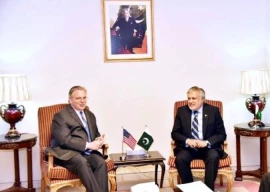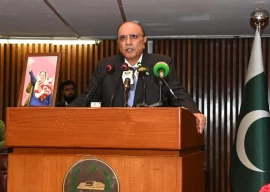
It would bear repetition that the standoff at Siachin — that has been graphically described as the highest battlefield in the world — is a result of the violation by India of the Simla agreement of 1972. While Indian policymakers have been reverently professing the sanctity of the Simla accord, they simultaneously have taken the stand that the “ground reality” at Siachin be accepted as a fait accompli. In other words, they would like to eat their cake and have it too.
Meanwhile, serious environmental problems have cropped up with regard to the Siachin glacier area. International experts have warned that unless the two armies vacated the area, there is serious danger of melting of the glacier that could lead to an ecological disaster of immense proportions. Resolution of the issue would thus be an important step towards saving the glacier and the environment. The snow-slide disaster some years back that took so many innocent lives remains a gory reminder.
The dispute had its beginning — circa 1982-83 — when India, reportedly taking advantage of the delivery of Soviet high altitude helicopters, landed its troops in the Siachin region and set up military posts on the Saltoro range. Prior to that, the entire area of the Siachen glacier was internationally recognised as being under the de facto administrative control of the Pakistan authorities — a fact that was not disputed by India at the time of the signing of the Simla accord. It is a recorded fact that international scientific expeditions to the Siachin glacier area obtained prior approval from authorities in Pakistan.
Since the time of the Indian intrusion, the forces of India and Pakistan have faced each other eyeball to eyeball on the ‘world’s highest battlefield’. It is perhaps the only battlefield in which more casualties have been the result of inhospitable climatic conditions than due to actual military operations. The confrontation in the Siachen area has been hurting both sides in terms of casualties as well as mounting unproductive expenditure, in addition to the specter of an impending ecological disaster of immense proportions.
At this stage, it may be in order to take an over-the-shoulder glance at the Siachin stand-off. In 1989, the then Indian Prime Minister had expressed willingness to sign an agreement based on unconditional withdrawal of the troops of both sides to conform to pre-Simla positions. Regrettably, the Indian government changed its mind before the agreement was ready for signature.
Pakistan and India had come close to finalising an agreement on withdrawal of the troops of the two sides as a result of talks between the defence secretaries of the two countries in New Delhi in November 1992. A delicately-balanced draft text taking into account the preoccupations of either side was worked out by the two delegations. The two delegations parted in good spirits to reconvene after lunch for the formal signing. For reasons that remain inexplicable, Indian government (establishment?) opted to scuttle the agreement and the envisaged signing ceremony never materialised.
With the danger of an impending environmental catastrophe on the horizon, time is of the essence. The Siachin issue demands urgent attention of both parties. The question is: will the two sides heed the writing on the wall or will they continue on their bumbling path until the environment catastrophe materialises? The meandering way in which the India-Pakistan relations appear to be moving hardly gives cause for much optimism.
One may be excused for looking askance at the current clamor for resumption of the bilateral dialogue. The more one looks at its history the more it appears to have degenerated into a dialogue of the deaf. The same can be said about the Track-II stalwarts. Instead of leading the common man on both sides up the garden path, would it not be the decent thing to do to let him know the facts? And should the two establishments also not recognise that the path of CBMs, as also track-II, is strewn with pitfalls that can be damaging for the peace-wagon, considering that it is already foundering on the rocks of non-credibility?
Published in The Express Tribune, June 17th, 2019.
Like Opinion & Editorial on Facebook, follow @ETOpEd on Twitter to receive all updates on all our daily pieces.



















































COMMENTS
Comments are moderated and generally will be posted if they are on-topic and not abusive.
For more information, please see our Comments FAQ